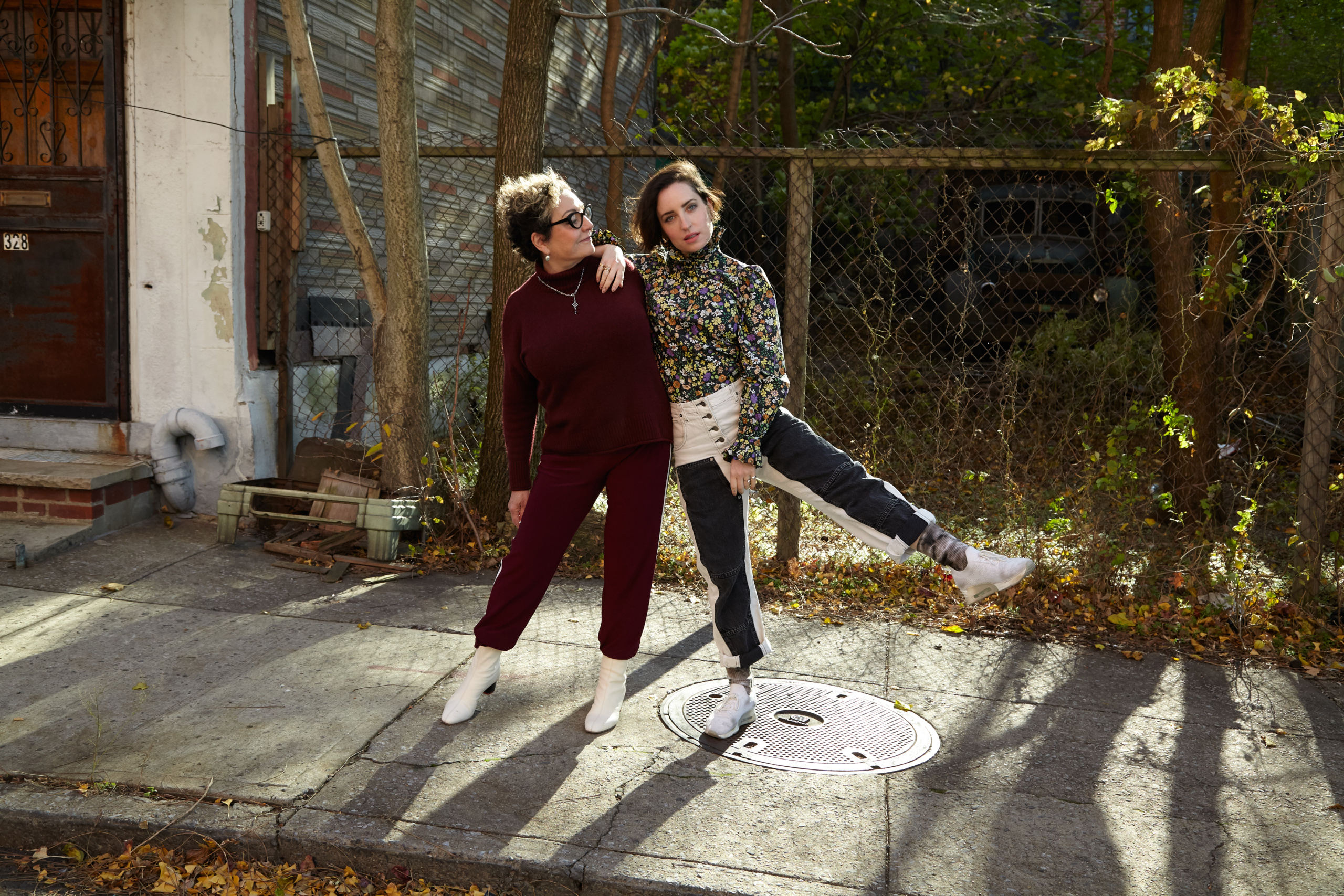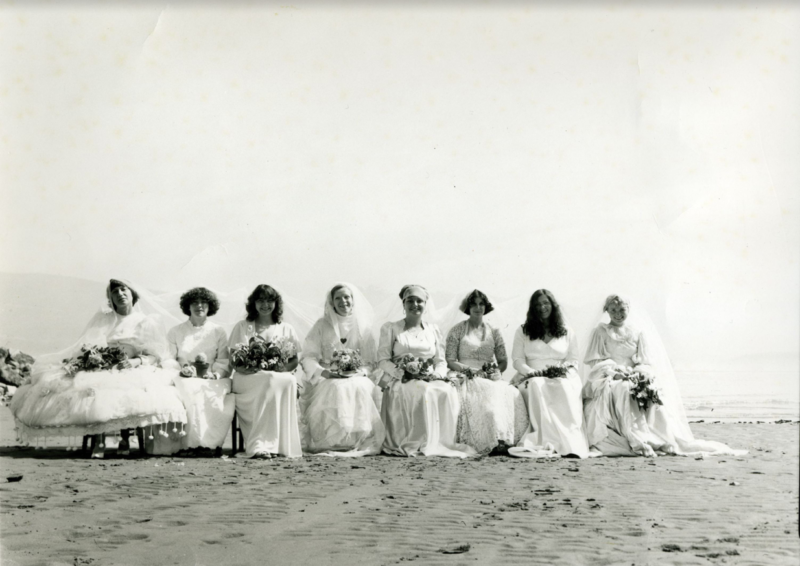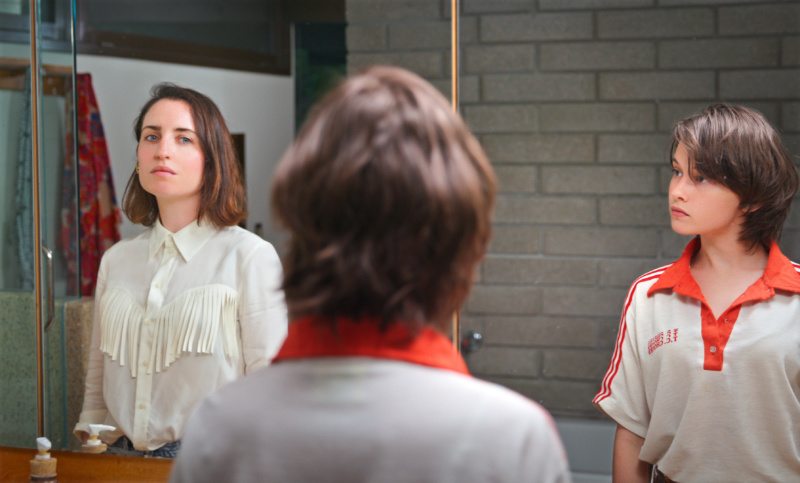
Working in video, film and digital media, artist Ardele Lister has been examining questions of gender, identity, globalization and media for more than four decades. Her work is in the permanent collection of the Museum of Modern Art and Centre Georges Pompidou, among others. Her daughter, Zoe Lister-Jones, is an actor, writer and director—the mind behind and star of 2017 indie hit Band Aid, and writer and director of the 2020 feminist teen horror film The Craft: Legacy. Most recently, How It Ends, co-written and co-directed with her husband, Daryl Wein—which follows a woman, played by Lister-Jones, on the last day of the world—just premiered at Sundance. We caught up with mother and daughter to ask about creativity, influences and family history.
Ardele, did you have a sense that Zoe was destined for filmmaking and acting?
Ardele Lister: I would give her toys to play with when she was little, and she would always go for my equipment. I could never get her out of the studio. So, I put her in a film called Zoe’s Car when she was two or three. This friend of ours played her dad, and I hired some actress to play the mom. And we’re there on set, and Zoe says, “Mom,” and I say, “Yes.” And she says, “Not you.” At two, she had the distinction down pat.
Zoe Lister-Jones: I was really method from a young age! Clearly, I loved entering a world of make-believe, as most children do. Children take their imaginations so much more seriously than adults, and so much of the creative process is trying to get back to that place—the curiosity with your own mind and playing within it. Both in writing and acting, there is a certain level of channeling, which is appealing because there are very few moments when I can escape my cerebral self.
Do you see your influence on Zoe’s films?
AL: When I think about some of Zoe’s films and some of my films, I think we’re in conversation with each other as artists. And she couldn’t help but be somewhat influenced—or maybe inundated—by my work, and by my focus on certain ideas, even if she might use a different form to tell her stories than I use to tell mine.
I think we both really value humor to tell a story. And we have a similar sense of humor, which can be kind of sarcastic or pointed. Zoe has focused, like in Band Aid, on intimate relationships and gender issues, and that was certainly the subject of my first film, So Where’s My Prince Already? What do you think, Zo?

ZLJ: My mom’s work was told through a feminist lens to varying degrees, and I think I use a similar lens. The ideas and ideologies I was inspired by—and inundated with—were a lot about looking at the ways in which masculine and feminine energy both meet and come into conflict, and I think that is at the crux of the narratives in both Band Aid and The Craft: Legacy.
And... well, growing up, my mom wore a lot of really cool jumpsuits. And I feel inspired by that. There are jumpsuits in both Band Aid and The Craft: Legacy, so I would say that jumpsuits are an important through line.
AL: I have a picture of myself in a yellow jumpsuit with Zoe on my shoulders.
ZLJ: That’s where it all began!
AL: It was really natural for you [to be drawn to filmmaking] having been surrounded by that kind of world, where people were telling stories in film and video.
ZLJ: And where there wasn’t a huge amount of separation between the personal and the professional, for better or for worse. I think I understood that you used your work as a video artist to answer big life questions—relationship questions, national identity—and I think I use my work in the same way, to try to investigate questions I don’t have the answers to in my life.
AL: I would also say that Zoe and I are in dialogue about work we are doing. She might send me a draft of a script, and I might show her an edit of something I’m working on. We have conversations as artists making work. And, of course, we have such a shared history of experience and points of view that it just enriches a conversation in terms of what we might be able to contribute to each other’s stuff.
ZLJ: Yeah, we both value each other’s opinion so deeply, and that’s a really special asset in both of our processes.
Video art and filmmaking are sibling disciplines, but there are some huge differences.
AL: I say as a joke that I make unpopular culture, and my daughter rebelled by going into popular culture. But it’s obviously much deeper than that. I think because Zoe got to the place of writing and directing through acting, it wasn’t like our forms were pitted against each other. I always thought it was great that she had chosen acting and was in that world. It was something that I had secretly wanted to do but I never allowed myself to.
ZLJ: I have a memory of watching Beverly Hills, 90210 in high school, and my mom sitting next to me and critiquing every single moment. And me being like, “Can you just let me fucking watch my show?” So, maybe I rebelled a little.

AL: I love popular culture! I just didn’t make it—I think in some ways because I felt like I didn’t belong in it. And maybe that’s the difference with Zoe. I think Zoe embraced it and had a sense of belonging. When I started out, it really wasn’t possible: there were so few women writing and directing in a Hollywood kind of world. So, the women that I was inspired by were people like Lina Wertmüller. In the world I came up in, we were looking at Italian Neorealists and the Germans, like Fassbinder and Herzog, but there weren’t that many women that I could see as role models. Living in New York at that time, it just was easier to make my own work as a truly independent artist, who fit more into the art world than into either what was then considered independent film or something like Hollywood.
ZLJ: I grew up really understanding how deeply painful it is to be an artist. I think your sense of not belonging fueled your work but it also could be quite paralyzing. I think the art world is even more cutthroat than Hollywood, and a medium like video art was so difficult to monetize. And I understood that just being the kid of two artists who felt so frustrated by a lack of recognition, and I saw two people who had to get jobs that ultimately took their focus away from their art. I understood that it was almost impossible to make a living from art.
But I am so grateful to have inherited my chutzpah from the OG, Ardele Lister. I don’t think I could have made the waves that I did without a mother who really told me to just fucking go for it and not take “no” for an answer. On Band Aid, hiring a crew that was all women—I grew up with a photo on the wall of my mom’s all-women film collective in the seventies.
AL: It’s a photo of eight of us on the beach in wedding dresses. It was called ReelFeelings. We called ourselves a feminist film collective at a time when to do that meant that a couple women wouldn’t join because they didn’t want to be called feminists. Our first film was called So Where’s My Prince Already?.
ZLJ: It’s such a brilliant film. All of her work is so brilliant and ahead of its time. And I have a dream of her getting a retrospective because it’s so long overdue.
And it was so cool to be exposed to her ideas and to see how she executed those ideas in such a singular way, to see, for lack of a better word, the bravery. And that’s what so cool about video art, it’s such a subversion of form—and to see the poetry in that process. And it was really exciting to go to the MoMA and see my mom’s work. I talk about the heartbreak, but there was also so much that was inspiring and encouraging to witness. And also the video and obscure cinema that I was exposed to from such a young age has so inspired my work to this day.
Mother’s Day, when I was nine or 10, my mom took me to the Knitting Factory and we watched a Japanese cult film called Tetsuo: The Iron Man—not the Marvel movie—with a live orchestra, and the protagonist’s dick turned into a drill and he was drilling people.
AL: Well, I never liked conventional Mother’s Days.




